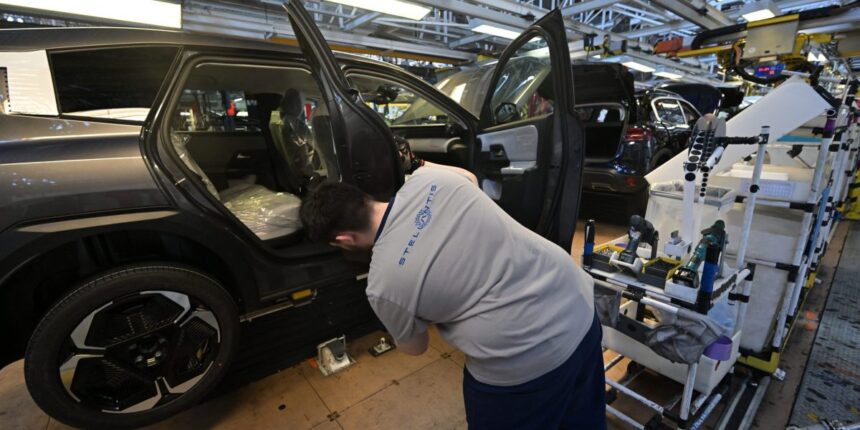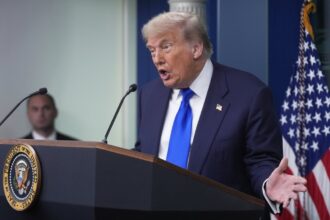The automotive industry faced a seismic shock yesterday as Stellantis, the global automaker behind iconic American brands like Jeep and Chrysler, reported a staggering $2.7 billion quarterly loss. This financial blow comes directly in the wake of President Trump’s aggressive tariff policies that have upended supply chains and dramatically increased manufacturing costs across the sector.
Walking through Stellantis’s Windsor Assembly Plant last week, the impact was palpable. Production lines moving at reduced capacity, workers exchanging worried glances, and executives huddled in crisis meetings. “We’re paying 30% more for imported components overnight,” explained Michael Rogers, a production manager. “This isn’t sustainable without major restructuring.”
The tariffs, which jumped from 7.5% to 25% on imported vehicle parts, have created a perfect storm for Stellantis. The company’s heavy reliance on global supply networks has transformed from a competitive advantage to a critical vulnerability. CEO Carlos Tavares didn’t mince words in yesterday’s earnings call: “These tariffs have forced an immediate reconsideration of our entire North American manufacturing strategy.”
Industry analysts point to Stellantis’s particular vulnerability compared to competitors. “Ford and GM have spent the past decade consolidating North American supply chains,” notes automotive economist Patricia Wong. “Stellantis maintained a more globally diversified approach that’s now proving costly.”
The numbers tell a devastating story. Stellantis’s North American operating margin collapsed from 16.4% to just 3.8% year-over-year. Vehicle production costs have increased by an average of $1,870 per unit, according to internal company documents, a figure impossible to fully pass on to consumers in the current competitive market.
The ripple effects extend beyond balance sheets. Stellantis announced plans to pause production at three U.S. plants, potentially affecting over 7,000 workers. The company has also frozen $4.5 billion in planned factory modernization investments while it reassesses the economic viability under the new tariff regime.
For American consumers, the consequences are already materializing at dealerships. Jeep Wrangler prices have increased 8.2% since April, while wait times for popular RAM truck models have extended to 4-6 months as production slows. Industry data shows Stellantis vehicles averaging price increases 2.3% higher than domestic competitors less affected by import tariffs.
Wall Street has responded harshly, with Stellantis stock plummeting 17% following the earnings report. Investment firm Morgan Stanley downgraded the stock, citing “uncertain profit recovery timeline and potential market share erosion in critical North American segment.”
The crisis highlights the complex interplay between industrial policy and global business operations. While the tariffs were implemented with the stated goal of protecting American manufacturing, the immediate impact on Stellantis—which employs over 43,000 Americans—demonstrates the complicated reality of modern automotive production.
“You can’t simply flip a switch and recreate complex supply chains,” explains Dr. James Chen, professor of international trade at the University of British Columbia. “These global networks developed over decades. Rebuilding them domestically will take years and billions in capital expenditure.”
Stellantis’s predicament raises broader questions about the future of multinational manufacturing in an increasingly protectionist global environment. Can international corporations successfully navigate rising trade barriers, or will we witness a fundamental restructuring of industrial production?
As Tavares told investors yesterday: “This isn’t just a Stellantis problem. This is a referendum on the future of global manufacturing itself.”
For more insights on the automotive industry, visit CO24 Business for our continuing coverage of this developing story.

























